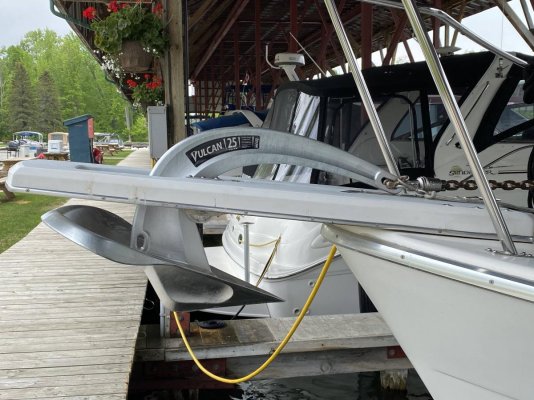castone001
Member
- Joined
- Dec 18, 2023
- Messages
- 14
Folks,
New to the forum and a new to us 1984 Californian 43' cpmy
While on sea trial and deploying the anchor we had the following concerns/issues.
We have the foot switches for up and down on the deck as well as windlass control in the fly Bridge
1) when deploying the anchor does not free fall, someone need to help it through the roller/pulpit till the anchor is cigar and will then deploy
2) similar someone needs to be there to guide the Anchor shaft thru
the pulpit slot onto the roller
3) bigger issues, when raising the anchor, the breaker switch for the windlass will trip about half way up. Once reset it will continue but has tripped more than once while raising.
Had it inspected and it is suggested that the anchor is too heavy for the windlass??
So...... If I'm going to replace the anchor, any suggestions for anchor type/size that would be a good fit forour boat/use? With the pulpit/roller setup currently in place, does that limit my options?
Thank you all!
Southern California mostly sandy type bottom, occasional rocky area.
Thank you,
Chris
New to the forum and a new to us 1984 Californian 43' cpmy
While on sea trial and deploying the anchor we had the following concerns/issues.
We have the foot switches for up and down on the deck as well as windlass control in the fly Bridge
1) when deploying the anchor does not free fall, someone need to help it through the roller/pulpit till the anchor is cigar and will then deploy
2) similar someone needs to be there to guide the Anchor shaft thru
the pulpit slot onto the roller
3) bigger issues, when raising the anchor, the breaker switch for the windlass will trip about half way up. Once reset it will continue but has tripped more than once while raising.
Had it inspected and it is suggested that the anchor is too heavy for the windlass??
So...... If I'm going to replace the anchor, any suggestions for anchor type/size that would be a good fit forour boat/use? With the pulpit/roller setup currently in place, does that limit my options?
Thank you all!
Southern California mostly sandy type bottom, occasional rocky area.
Thank you,
Chris





